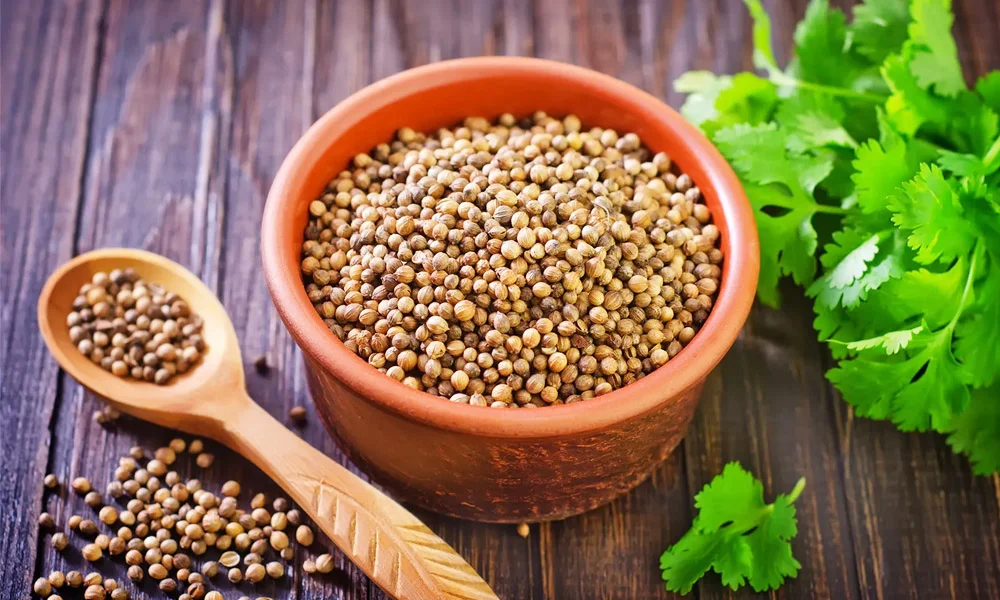How Koriandri Versatile Spice Enhancing Global Cuisines
When it comes to kitchen essentials, very few spices have the universal recognition and culinary impact that Koriandri enjoys. Known for its bold aroma and rich taste, Koriandri (commonly referred to as coriander) has been a staple in households, restaurants, and even ancient kitchens for centuries. From soups to curries, salads to spice blends, this small seed has found its way into cuisines worldwide. But Koriandri is much more than just a cooking ingredient — it carries cultural heritage, health benefits, and a versatility that makes it stand out among spices.
In this detailed guide, we’ll explore everything about Koriandri — from its origins, culinary uses, health benefits, and storage tips, to its global popularity. Whether you’re a seasoned chef or someone who just loves experimenting in the kitchen, this article will help you understand why Koriandri is considered a kitchen superstar.
What Exactly is Koriandri?
Koriandri is derived from the dried seeds of the Coriandrum sativum plant, which belongs to the parsley family. Interestingly, both the leaves (cilantro) and the seeds (Koriandri) are used in cooking, each bringing a completely different flavor profile to dishes. While cilantro leaves have a fresh, citrusy flavor, the seeds have a warm, nutty, and slightly citrus taste when ground or roasted.
This unique dual nature makes Koriandri special because very few plants offer two culinary products with such distinct roles in global cooking.
The Rich History of Koriandri
Koriandri isn’t just a modern kitchen ingredient; it has a fascinating history:
- Ancient Egypt: Archaeologists have discovered coriander seeds in tombs dating back to 1550 B.C., indicating its cultural and medicinal importance.
- Greek and Roman Times: It was used in wine-making and as a seasoning for bread and meats.
- Asian Cuisine: India and China have cultivated and used Koriandri for thousands of years, not only in cooking but also as part of traditional medicine.
- European Influence: During the Middle Ages, Koriandri was one of the few spices grown in European monasteries and was used to preserve meat.
Its journey from ancient civilizations to modern supermarkets showcases just how valuable and timeless Koriandri has always been.
Culinary Uses of Koriandri
One of the biggest reasons behind the popularity of Koriandri is its versatility in the kitchen. Let’s explore how it’s used worldwide:
1. Spice Blends
Koriandri seeds are a common ingredient in spice mixes such as:
- Garam Masala (India)
- Ras el Hanout (Morocco)
- Curry Powders
- Mexican Adobos
2. Soups and Stews
The warm, nutty essence of roasted Koriandri enhances broths, lentil soups, and vegetable stews, giving them depth and complexity.
3. Pickling and Marinades
Whole Koriandri seeds are often added to pickles, chutneys, and marinades for meats, providing an aromatic boost.
4. Baking
In Europe, Koriandri has traditionally been used in bread, cakes, and pastries to give a warm, citrusy undertone.
5. Fresh Salads & Dressings
Ground Koriandri adds a tangy punch to salad dressings, yogurt dips, and vinaigrettes.
This flexibility makes Koriandri a “go-to spice” in both sweet and savory dishes.
Health Benefits of Koriandri
Beyond taste, Koriandri is highly valued for its medicinal and nutritional properties:
- Rich in Antioxidants – Helps reduce oxidative stress and supports cell health.
- Digestive Aid – Traditionally used to relieve bloating, indigestion, and gas.
- Anti-inflammatory Properties – Its compounds help manage inflammation in the body.
- Supports Heart Health – Known to reduce bad cholesterol (LDL) and improve good cholesterol (HDL).
- Regulates Blood Sugar – Some studies suggest Koriandri may help in managing blood sugar levels.
- Boosts Immunity – Packed with vitamins and minerals like Vitamin C, Vitamin K, potassium, and magnesium.
It’s no surprise that ancient medicinal systems like Ayurveda and Traditional Chinese Medicine have praised Koriandri for centuries.
Koriandri in Global Cuisines
Different cultures have embraced Koriandri in their own unique ways:
- India: Koriandri powder is a foundation spice in almost every curry.
- Mexico: Ground Koriandri is essential in tacos, salsas, and chili dishes.
- Middle East: Used in kebabs, tagines, and falafels.
- Europe: Featured in sausages, baked goods, and pickled vegetables.
- Africa: Adds depth to spice rubs and stews.
Its global footprint proves that no matter where you go, you’ll likely find Koriandri in some form.
Storage and Shelf Life
To preserve its bold aroma and taste:
- Store whole seeds in an airtight container, away from direct sunlight.
- Grind seeds only when needed for maximum freshness.
- Properly stored, Koriandri seeds can last up to a year without losing flavor.
Fun Facts About Koriandri
- Some people find cilantro (the leaves of Koriandri) tastes like soap due to a genetic trait.
- The word “coriander” comes from the Greek word koris, meaning “bug,” because fresh seeds smelled similar to bedbugs in ancient times.
- Koriandri seeds were one of the first spices brought to the Americas by European colonizers.
Why Koriandri is a Must-Have in Your Kitchen
From health benefits to flavor enhancement, Koriandri is one spice you cannot ignore. It bridges cultures, connects ancient traditions to modern diets, and adds magic to both everyday meals and gourmet dishes. Whether you’re making a hearty curry, a refreshing salad, or a sweet loaf of bread, this tiny spice will always find a place on your plate.
Final Thoughts
Koriandri is more than just a spice — it’s a culinary treasure with deep historical roots, rich health benefits, and unmatched versatility. Its bold aroma and taste can elevate even the simplest dish into something memorable. No wonder chefs and home cooks alike swear by it.
So, the next time you sprinkle some ground Koriandri into your dish, remember you’re not just adding flavor — you’re continuing a tradition that spans centuries and cultures.







